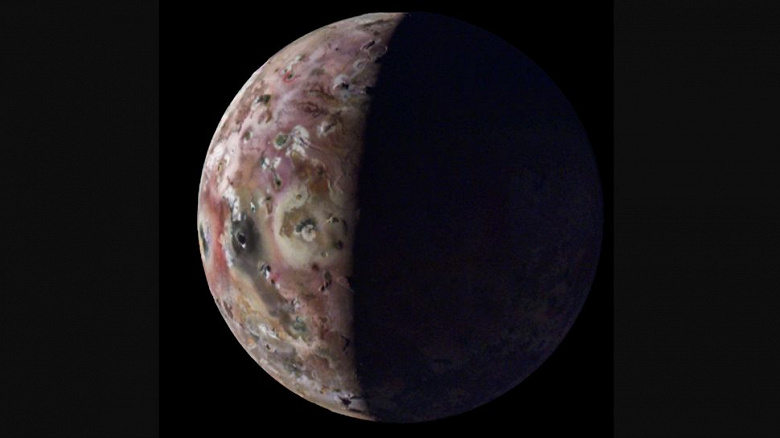Space probe helps declassify the secrets of Jupiter's volcanic moon itself
Four satellites of Jupiter — Ganymede, Callisto, Europa and Io — They have long ceased to be just blurry images in a telescope. It was they who admired the great Italian astronomer Galileo Galilei back in 1610, which was the reason for calling them Galilean satellites. Over the past 400 years, astronomers have learned a lot about these satellites thanks to improvements in telescopes and spacecraft missions such as NASA's Juno orbiter.
Recently «Juno» made two close flybys of the most volcanically active body in the solar system — Io, which led to amazing discoveries for the scientific world. «Io is simply filled with volcanoes, we were even able to observe some of them in the process of eruption», — noted the mission's chief investigator, Scott Bolton. In addition, new data was obtained about a lava lake called Loki Patera, which is about 200 kilometers long. «We discovered stunning details showing islands inside a potential magma lake, surrounded by molten lava. The reflection of the lake seen by our instruments indicates that Io's surface may be smooth and resemble obsidian on Earth, created by volcanoes», — Bolton added.
During two flybys in December 2023 and February 2024, «Juno» came to within 1,500 kilometers of Io's surface. The data collected from these flybys provided the basis for the creation of impressive animations and images.
As part of the mission, the space probe also helped study Jupiter's poles using a microwave radiometer (MWR), which helped reveal differences between the gas giant's northern polar cyclones. Project scientist at NASA JPL Steve Levin noted: «The central cyclone at Jupiter's north pole is clearly visible in both infrared and visible images, but its microwave data is significantly different from other storms, indicating significant differences in its structure».
Scientists are also conducting research to determine the presence of water on Jupiter, although the planet has no visible surface. Scientists are interested in oxygen and hydrogen molecules in its dense atmosphere. This research is a continuation of work done by the team of the Galileo orbiter, which completed its mission by diving into the atmosphere of Jupiter in 1995 year. Recent data collected by «Juno» confirmed the presence of water near Jupiter's equator, which is important for revising existing ideas about the composition of the planet.
«The Galileo mission team did an amazing job, but its data was far from our models of water abundance on Jupiter, and we wondered whether the area where it sampled might be an outlier. But until the latest observations we could not confirm this», — Bolton said, — «Now, thanks to the results obtained using MWR, we have established that the probe entry site was abnormally dry».
Although many questions still remain about how Jupiter formed, the scientific community continues to rely on data obtained from the extended Juno mission. The probe's upcoming 61st flyby of Jupiter, scheduled for May 12, promises even more data about Jupiter and its moons.

